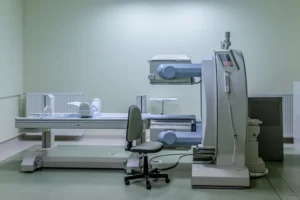What Are The Symptoms of Shingles?
- Updated on: Nov 18, 2024
- 5 min Read
- Published on Oct 3, 2019


Shingles (herpes zoster) occurs when the dormant chickenpox virus is reactivated in your nerves. Shingles is a viral infection that is characterized by a painful rash and blisters on the skin. The condition is caused by the reactivation of the varicella-zoster virus, which is the same virus that causes chickenpox. Early signs of shingles may include tingling and a localized pain. Some people may develop a blistering rash and may also experience itching or burning. Acute eruptive symptoms are the hallmark of shingles. This viral infection can cause a painful, itchy red rash that erupts in clusters on one side of the body. The rash is often preceded by tingling or burning sensations, and may be accompanied by fever, chills, headache, and fatigue. The blisters of shingles can burst and crust over, leaving scars that may be painful for months or even years after the infection has cleared. In some cases, shingles can also affect the eyes, leading to vision loss or other serious complications. If you experience any of these symptoms, seek medical attention promptly to ensure proper diagnosis and treatment.
Typically, rashes last two to four weeks.
Signs and Symptoms of Shingles
A shingles outbreak can be quite uncomfortable and often comes with a range of symptoms. Shingles may affect various parts of the body, based on the nerves involved. The signs and symptoms of shingles are seen to affect only a small part of one side of the body.
Initial signs and symptoms of this disease develop a few days before the painful red rash first appears. These signs include headache, sensitivity to light, and flu-like symptoms without a fever, feeling generally unwell.
These may include:
- Localized burning, throbbing or stabbing pain is a common sign of shingles. This is observed in one side of the face or body along with fever, chills, headache or upset stomach. People mostly feel unwell for many days before the rash appears (within days to weeks). The pain usually is constant, dull or with a burning sensation and the intensity of which can vary from mild to severe.
- The rash is usually seen with fever, fatigue, or headache. These rashes develop as a stripe of blisters that wraps around either the left or right side of your torso. At times shingles rash occurs around one eye or on one side of the neck or face.
- Tingling, itching, or prickling skin followed by a group of fluid-filled blisters on the skin after a few days. These blisters eventually crust over within a week.
- A complication of shingles is that few patients develop postherpetic neuralgia (PHN). In this situation the pain of shingles persists even after the rash has disappeared.
Rare and serious complications of shingles
These are some serious complications that may require immediate attention.
- pain or rash in areas such as the eye, which if left untreated can lead to permanent eye damage
- loss of hearing or severe pain in one ear, vertigo, or loss of taste
- oticus also known as Ramsay Hunt syndrome
- bacterial infections, which can develop if the skin becomes red, swollen and warm to the touch
Stages of Shingles
Developing shingles is a painful experience that can affect anyone who has had chickenpox in the past. The stages or phases of the shingles span from the time the herpes zoster virus first appears in the form of chickenpox during ones childhood to a probable postherpetic neuralgia (PHN) in old ages. The timeline of shingles is spread over several decades. The symptoms and signs of shingles in different stages are as follows.
Symptoms of Shingles in Prodromal stage (before the rash appears)
- Pain, burning or tickling sensations are observed around the affected nerves several days or weeks before a rash is developed.
- Symptoms like flu without fever may develop just before or along with the start of the rash.
- Swelling and tenderness of the lymph nodes are seen.
Symptoms of Shingles Active stage (rash and blisters appear)
- Blisters can be seen anywhere on the body (only one side of the body). Blisters will develop and the fluid seen inside it is clear initially but may turn cloudy after 3 to 4 days.
- Blisters may break open, ooze, and crust over in about 5 days. The rash heals in a couple of weeks, although some scars may persist.
Postherpetic neuralgia (chronic pain stage)
- Postherpetic neuralgia (PHN) is a commonly observed complication of shingles.
- The pain associated with PHN mainly affects the forehead or chest, making it difficult to perform any daily activities.
When to see a doctor
One of the best ways to prevent shingles is to know the symptoms and watch for them closely. If you notice any of the signs of shingles, it’s important to seek medical attention right away. Early treatment can help to reduce the severity of the symptoms and speed up the healing process. One of the most effective ways to prevent shingles is to get the chickenpox vaccine. Shingles is caused by the same virus that causes chickenpox, and getting vaccinated against chickenpox can significantly lower your risk of developing shingles.
As diagnosis is performed based on the symptoms and the appearance of the rash, a timely detection and treatment may help reduce the severity of the symptoms and the risk of further development of complications. Calamine lotion is often recommended to help soothe the itching and discomfort caused by shingles. Fortunately, there are antiviral medications that can help to relieve the symptoms of shingles and speed up the healing process. These medications work by targeting the virus and stopping it from replicating, which can reduce the severity and duration of the infection. Antiviral medications are most effective when they are started within 72 hours of the onset of symptoms, so it’s important to see a healthcare provider as soon as possible if you suspect you may have shingles. Other treatments, such as pain relievers, anti-inflammatory medications, and topical creams, can also help to manage the symptoms of shingles and improve your comfort while you recover. Read about treating shingles.
In the following situations its best to contact the doctor promptly:
- If the rash is widespread and painful
- You need meds for shingles
- If any family member has a weakened immune system (due to cancer, medications or chronic illness)
- 60 years or older, as complications significantly rise with increasing age
- Incidence of pain and rash near nose, which increases the risk of the virus in the eye. This, if left unattended, can lead to permanent vision problems
- If it’s the start of a outbreak, as timely treatment with antivirals can shorten the duration of infection
- The affected areas are more prone to secondary infections with bacteria. Hence, timely intake of antibiotics can halt the spread of bacterial infection
- In case the rash persists more than 10 days with no signs of improvement
- Unbearable pain that lasts long term
- Along with shingles rash, varied symptoms such as vertigo, buzzing in your ears, rapid onset of weakness, double vision, face droop, or confusion may develop
Referral to hospital
It’s very rare that someone detected with shingles, may be referred to a hospital. But in certain unavoidable situation the physician may consider seeking a specialist opinion if:
- they suspect meningitis or encephalitis
- shingles affect the patients eyes, as it could lead to permanent vision problems if treatment is not received in time
- there is an uncertainty in diagnosis
- it is an unusually prolonged case of shingles that’s not responding to treatment
- one has been diagnosed with the similar condition more than twice
- the patient is pregnant
- the individual is with a weakened immune system












